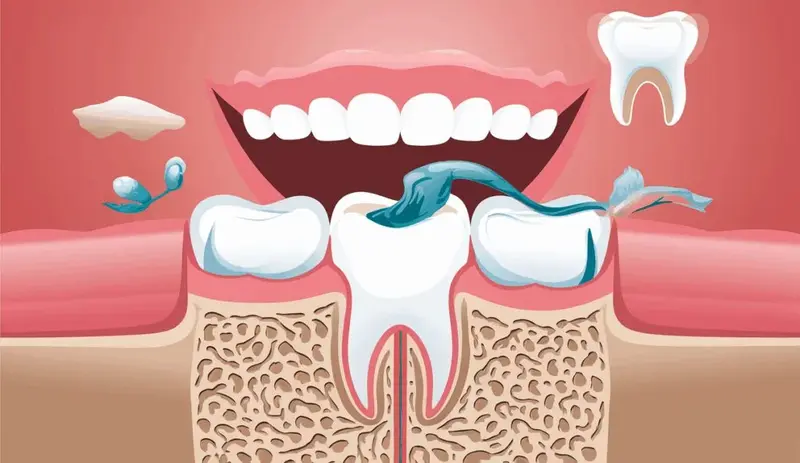
You’re sitting in the dentist’s chair, mouth open wide, and the word “metal filling” just dropped. Suddenly, a million questions start racing through your mind. Are these things actually safe? What if they’re doing more harm than good?
Most of us grow up thinking whatever our dentist recommends must be totally fine. But in today’s world of increasing health awareness, it’s smart to ask questions. This guide will break down everything you need to know about metal dental fillings-no medical jargon, just straight talk about what’s really going on in your mouth.
What Exactly Are Metal Dental Fillings?
For more than a century, metal dental fillings have been a fundamental part of dental care. Their history is an interesting one. The fillings that we now think of as dental amalgam were first developed in the mid-1800s.
They became the go-to solution for treating cavities. Dentists were thrilled with amalgam fillings-composed primarily of mercury, silver, tin, and copper-because they were incredibly durable and relatively inexpensive.
In fact, there are several varieties of metal fillings, the most common being silver amalgam. Gold fillings, though not as frequently used, were considered excellent materials for their longevity and strength.
Dental professionals preferred these options because they could rapidly repair decayed teeth with materials that would last through years of chewing and grinding.
The Big Safety Question: What Research Actually Says
Most people don’t realize this: for decades, medical researchers have vigorously debated the safety of metal dental fillings. Scientific studies have generated a mixed bag of results, which has fueled ongoing debate about whether these fillings pose potential health risks.
The main worry has to do with mercury, a major part of the conventional amalgam fillings that your dentist might use.
Recent medical consensus indicates that dental fillings are safe for the majority of adults. The American Dental Association unequivocally supports their use, maintaining that the mercury contained within the amalgam is stable and poses minimal risk to the average patient.
Some investigators, however, suggest that the situation is a little more complicated and that potentially toxic amounts of mercury are being released from the fillings without the users being aware of it.
Potential Risks Most People Don’t Know About
Let’s discuss the mercury in dental amalgams. While dental experts hold that the amount of mercury in dental fillings is too low to cause harm, some studies suggest that it might be doing something to us.
These studies hint at possible side effects and even potential links to neurological issues. But such claims seem unconvincing and have not been well supported.
You May Like: Why Do My Teeth Hurt When I Eat Ice Cream? Tooth Sensitivity Causes
Long-standing health consequences are especially difficult to gauge. Some patients are sure that their metal fillings have caused subtle physical changes, yet science is unable to provide solid proof to back up these claims. It’s a complicated matter that’s still under hot debate in the medical fraternity.
Alternative Filling Options to Consider
What does this mean for you? Luckily, contemporary dentistry has several alternatives to offer. For one, there are ceramic fillings. These provide a more natural look, and they’re completely metal-free. Another increasingly popular option is composite resin fillings.
These are more and more being used in dental work because they provide a tooth-colored option that blends seamlessly with natural dentition.
Each option has its own advantages and disadvantages. Dental ceramic fillings are aesthetically pleasing but can cost a pretty penny. Composite resins are natural-looking and easy on the wallet, but might not hold up as well as metal fillings.
How to Talk to Your Dentist About Filling Concerns?
A key piece of advice is this: communication really is critical. When the subject of your fillings comes up, try to engage your dentist in some targeted dialogue. Inquire about the long-term effects of various filling materials on your dental health. Press for specifics. Some good questions to ask might be:
- What would you recommend for the unique profile of my dental health?
- Are there any known risks associated with the kind of filling you’re suggesting?
Look for warning signs such as dismissive answers or a lack of willingness to talk about options. An excellent dentist will take your worries seriously and will give you information that is detailed and transparent.
To make a decision with good information means to grasp all the possibilities, consider all the likely hazards, and pick the thing that is most in line with your kind of health. For a personalized consultation, visit our office location on Google Maps.
Conclusion
Your health is too important to just accept something without understanding it. While metal fillings have been used for decades, you now have more information and choices than ever before.
The key is staying informed, asking questions, and working with a dentist who respects your concerns.






